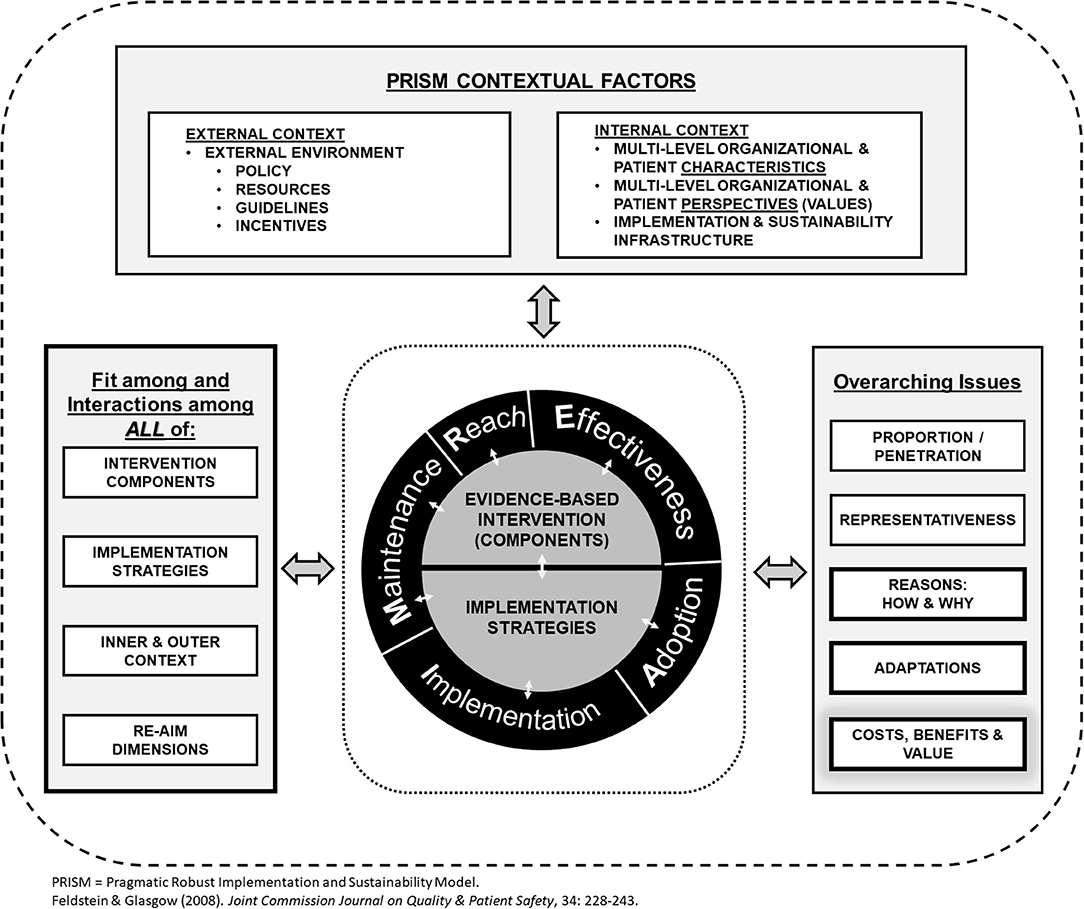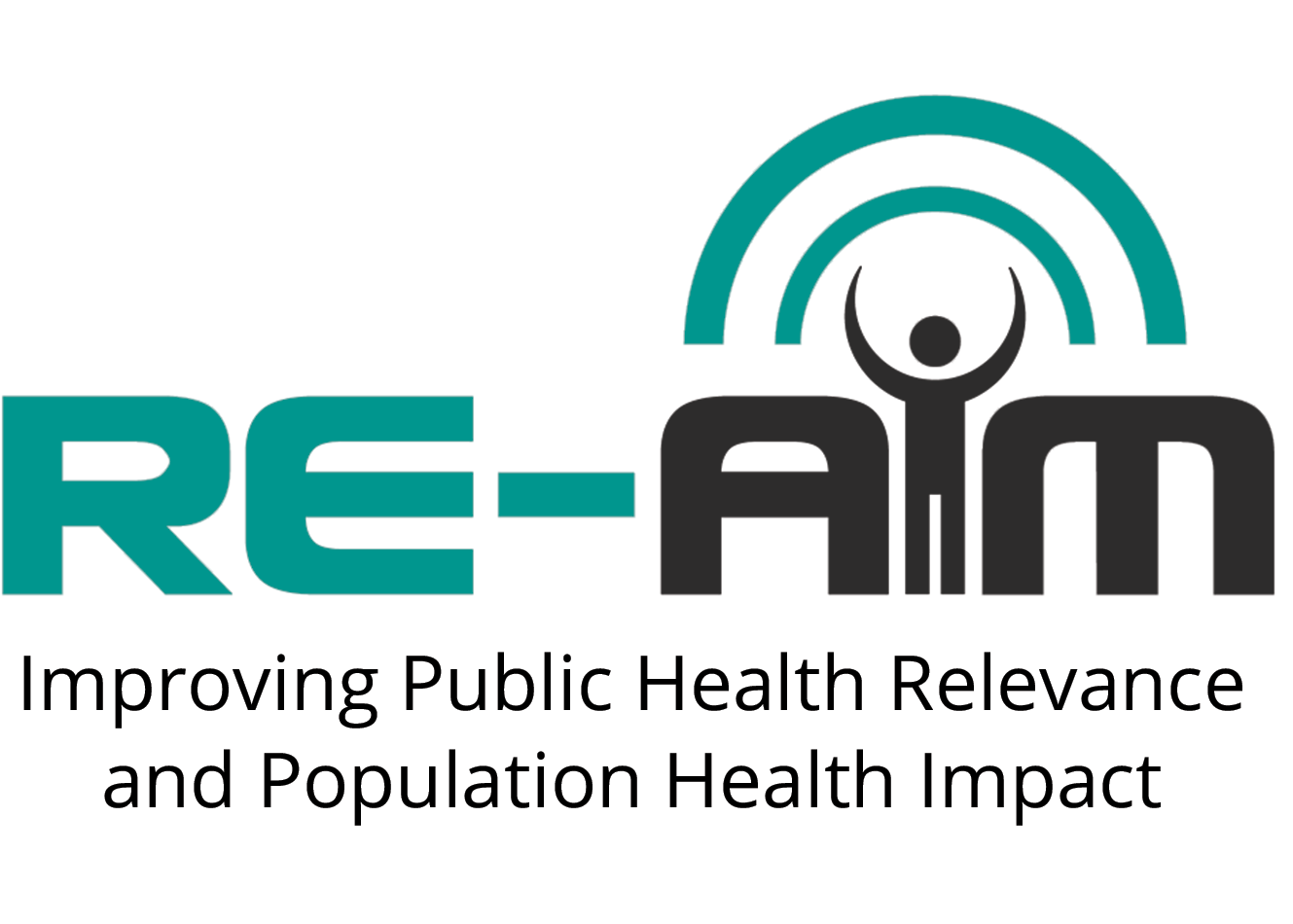November 2019-
For this month we have a question for you! Could you use some up to date and informative RE-AIM figure, table or slides? We have noticed in presentations and even some publications that the figures, definitions and tables being used are considerably out of date.
The RE-AIM model has evolved considerably since its development and initial publication in 1999. Many of these changes are documented in the recent publication “RE-AIM at 20: RE-AIM Planning and Evaluation Framework: Adapting to New Science and Practice with a Twenty-Year Review” in Frontiers of Public Health (Glasgow et al, 2019). This article and its related, updated Figure on key RE-AIM dimensions and influences on them is in the article, above in the scrolling banner, and under Figures in the Resources section of this website.
New RE-AIM Summary Figure: This updated figure summarizes several key issues about RE-AIM. In the center of the figure are one’s Evidence based intervention (components or functions) and Implementation strategies. The RE-AIM dimensions are arranged around this combination of intervention(s) and implementation strategies. On the left-hand side of the figure are important reminders that there is seldom one best intervention or implementation strategy. Rather, there needs to be fit or alignment among the specific context, the intervention and the implementation strategy.
Some of the key contextual factors are summarized at the top and bottom of the figure, from the Pragmatic Robust Implementation and Sustainability Model (PRISM), which is itself an extension of RE-AIM. Other key, crosscutting points that apply to all RE-AIM dimensions are summarized on the right hand side, and include the ‘principles’ of proportion, representativeness, and understanding why the resulting outcomes occur. This box on the right of the figure also notes two of the most important additions to the RE-AIM over the past several years: issues of adaptations to an intervention or implementation strategy, and costs in delivering or replicating a program. Both of these are now part of the Implementation dimension of RE-AIM.
Patterns of RE-AIM Outcomes: As mentioned on the left hand side of the new RE-AIM figure, ‘You can’t have it all’. What is meant by this is that the RE-AIM dimensions are interrelated and that often an intervention or other factors that maximizes impact on one dimension can have unintended adverse impacts on another dimension. This issue is illustrated in the figure displaying the ‘RE-AIM profile’ across the various dimensions for a higher intensity vs. a lower intensity intervention. For example, as can be seen from this hypothetical example, often a program or policy that has high effectiveness produces low reach- and vice versa.

